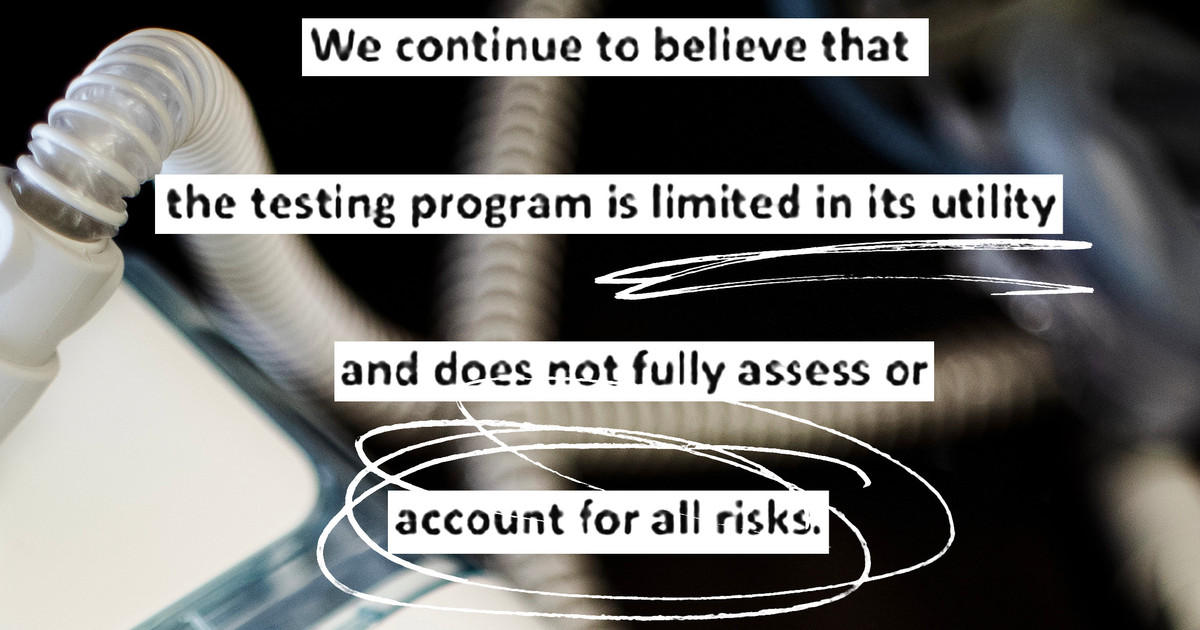As Philips reassured patients that millions of recalled machines were safe, internal emails show federal regulators privately told the company its testing didn’t account for the impact of long-term harm from tainted devices.
In the winter of 2021, with its stock price plunging, lawsuits mounting and popular breathing machines pulled from the shelves, Philips Respironics made a surprise public announcement.
The company said the sleep apnea devices it had recalled only months earlier had undergone new safety tests and did not appear to pose a health threat to the millions of patients who relied on them to breathe.
It was a remarkable reversal for the global manufacturer, which had drawn headlines after admitting that an industrial foam placed inside the devices could break apart in heat and humidity and send potentially toxic and carcinogenic particles and fumes into the masks worn by users.
The new results, Philips said, found the machines were not expected to “result in long-term health consequences.”
But a series of emails obtained by ProPublica and the Pittsburgh Post-Gazette show the Food and Drug Administration quickly rejected those safety claims, telling Philips that the new tests failed to account for the impact on patients who had used the devices for years. The FDA also said it still considered the machines a significant health threat that could inflict severe injury or even death.
“These tests are preliminary,” the agency told Philips. “Definitive conclusions cannot yet be drawn in support of reduction in hazards.”
The FDA did not publicize its assessment, even though patients across the country were at risk and an untold number continued using their recalled machines while they waited on Philips to send replacements.
At the time, the FDA made only one public reference to the dispute — on the fourth page of a 14-page letter to Philips in May 2022. To see it, customers would have had to find it on the agency’s website and then wade through scientific language about “cytotoxicity failure,” “novel continuous sampling” and other complex concepts.



The originals were so loud people would refuse to use them - not least because they would prevent anyone in bed with you from going to sleep.
Ah well probably relevant that my folks have slept in different rooms since early 90s and mom had already had a trip to the hospital relating to not breathing at night. Maybe the sound was easily overlooked and I just don’t remember it.